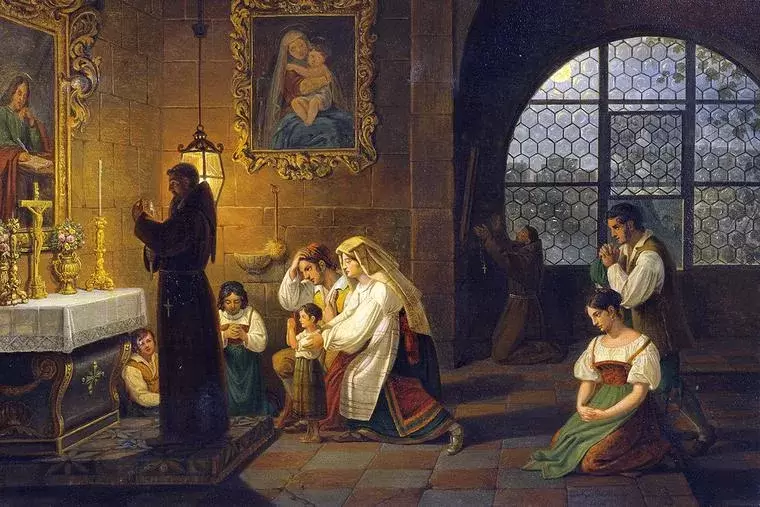 I trimmed the history of the Latin Mass to make it readable. The summary comes from Wikipedia, a resource I use because the entry on the Catholic Church is accurate and because entries go through a reviewing and editing process. If anyone has a better resource that is not too complicated, please provide a link. “The earliest surviving account of the celebration of the Eucharist or Mass in Rome is that of Saint Justin Martyr (died c. 165), in chapter 67 of his First Apology: … “The descriptions of the Mass liturgy in Rome by Hippolytus (died c. 235) and Novatian (died c. 250) are similar to Justin’s. … “It is unclear when the language of the celebration changed from Greek to Latin. Pope Victor I [pontiff 189-199] may have been the first to use Latin in the liturgy in Rome. Others think Latin was finally adopted nearly a century later. The change was probably gradual, with both languages being used for a while. … “The Roman Missal that Pope Pius V issued at the request of the Council of Trent (1545-1563) gradually established uniformity within the Western Church after a period that had witnessed regional variations in the choice of Epistles, Gospels, and prayers at the Offertory, the Communion, and the beginning and end of Mass. “With the exception of a few dioceses and religious orders, the use of this Missal was made obligatory, giving rise to the 400-year period when the Roman-Rite Mass took the form now known as the Tridentine Mass.” We use the 1962 edition of the Missal. Its 1,850 pages are so good, so comprehensive, so eloquent that they are all I need for daily living. For example, the Morning Prayer contains references to Proverbs, Psalms, Lamentations, and Isaiah. The painting is by Johann Nepomuk Schödlberger, Inside a Church in Italy, 1830.
0 Comments
Leave a Reply. |
Categories
All
Archives
July 2024
|
 RSS Feed
RSS Feed